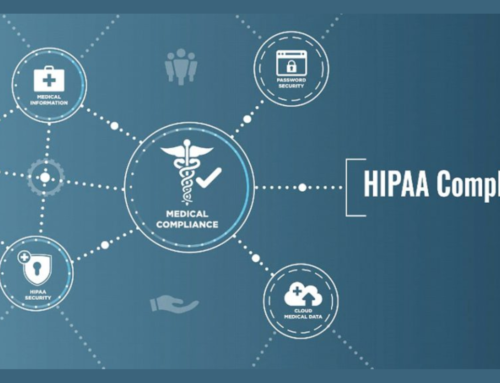Introduction
Demystifying GDPR
GDPR, enacted to fortify data protection and privacy for European Union citizens, is grounded in a set of core principles. At its core, GDPR aims to give individuals more control over their personal data. It outlines principles like lawfulness, fairness, and transparency in data processing. Understanding these principles is crucial for organizations aiming to align with GDPR.
Shared Responsibility Model
Microsoft 365 operates under a shared responsibility model, where both Microsoft and organizations using the platform share accountability for data protection. Microsoft is responsible for the security of the cloud, including infrastructure and services, while users are accountable for securing their data in the cloud. Delving into this partnership is vital to comprehend how data protection is a collaborative effort, ensuring a robust defense against potential threats.
Common Misconceptions
There are common misconceptions surrounding GDPR compliance in cloud services like Microsoft 365. One prevalent myth is that the cloud provider alone ensures compliance. In reality, while Microsoft provides tools and features, the onus is on organizations to configure and utilize them correctly. Addressing such misconceptions is crucial to fostering a more accurate understanding of the shared responsibilities and dispelling unnecessary anxieties.
Assessing your Current Data Landscape
Conducting a Comprehensive Data Inventory
The initial step toward GDPR compliance within Microsoft 365 involves conducting a thorough data inventory. Organizations must identify and document the personal data they store and process within the platform. This encompasses data across applications like Outlook, SharePoint, and Teams. A meticulous inventory lays the foundation for implementing effective data protection measures.
Understanding Data Subject Rights
One key aspect of GDPR is granting individuals control over their personal data. Microsoft 365 aligns with this by providing mechanisms to uphold data subject rights. These rights include access to personal data, the right to rectify inaccuracies, and the right to erasure. A detailed understanding of these rights is essential for organizations to facilitate compliance and empower data subjects.
Leveraging Microsoft 365 for GDPR Compliance
Microsoft 365 offers tools and features that facilitate compliance with GDPR’s data subject rights. For instance, the platform provides mechanisms for users to access and manage their personal data. Through features like Security and Compliance Centers, organizations can streamline responses to data subject requests, ensuring a transparent and user-centric approach to data management.
Implementing Data Minimization Principles
An integral GDPR principle is data minimization, emphasizing the collection of only necessary personal data. Microsoft 365 supports this principle through various features. Organizations can configure document retention policies to automatically delete data that is no longer required, reducing the risk associated with unnecessary data storage. Implementing these principles not only aids compliance but also enhances overall data governance within the platform.
Building a GDPR-Compliant Microsoft 365 Environment
Configuring Security and Privacy Settings
Creating a GDPR-compliant environment in Microsoft 365 requires meticulous configuration of security and privacy settings. Organizations must align these settings with GDPR principles, ensuring that personal data is treated with the highest level of protection. This involves setting up policies for data access, auditing, and encryption, establishing a robust foundation for compliance within the platform.
Implementing Access Controls and Data Encryption
Access controls are pivotal for GDPR compliance, and Microsoft 365 offers a range of features to manage and restrict access to personal data. Through role-based access control (RBAC) and permissions settings, organizations can ensure that only authorized individuals have access to specific data. Additionally, leveraging encryption mechanisms provided by Microsoft 365 enhances the security of personal data, adding an extra layer of protection against unauthorized access.
Leveraging Microsoft’s Compliance Tools
Microsoft provides dedicated compliance tools and resources that organizations can leverage to streamline and enhance their GDPR compliance efforts. The Security and Compliance Centers offer a centralized hub for managing compliance-related tasks, from conducting risk assessments to responding to regulatory requests. Utilizing these tools ensures that organizations are well-equipped to navigate the complexities of GDPR within the Microsoft 365 environment.
Utilizing Microsoft’s Compliance Resources
In addition to tools, Microsoft offers a wealth of educational resources and documentation to support GDPR compliance. Organizations can tap into official documentation, webinars, and support channels to enhance their understanding of GDPR requirements and Microsoft 365 capabilities. This proactive approach not only aids in immediate compliance but also establishes a continuous improvement cycle as regulations evolve.
Building a GDPR-compliant environment in Microsoft 365 is an ongoing process that demands a comprehensive understanding of GDPR principles, thoughtful configuration of platform settings, and strategic use of Microsoft’s compliance tools and resources. This integrated approach ensures that organizations not only meet current compliance requirements but also remain adaptable to future regulatory changes.
Data Breach Management and Incident Response
Understanding Reporting Obligations under GDPR
GDPR mandates organizations to promptly report data breaches to the relevant supervisory authority and, in certain cases, to affected individuals. Understanding these reporting obligations is crucial for compliance. Microsoft 365 provides features that assist organizations in identifying and assessing potential breaches, facilitating timely reporting. This section delves into the specifics of GDPR reporting requirements and how Microsoft 365 aids organizations in fulfilling these obligations.
Implementing Robust Data Breach Prevention and Detection
Preventing data breaches is a primary objective of GDPR, and Microsoft 365 equips organizations with tools to build robust prevention and detection mechanisms. From advanced threat protection to data loss prevention, the platform offers features that actively safeguard against potential breaches. This part of the content explores these preventive measures in detail, emphasizing their role in maintaining GDPR compliance.
Developing a Comprehensive Incident Response Plan
In the event of a data breach, having a well-defined incident response plan is essential. This involves outlining the steps to be taken, the individuals involved, and the communication strategy. Microsoft 365 supports organizations in developing such plans, offering guidance on how to use its features for swift and effective incident response. This section provides insights into the key components of an incident response plan within the Microsoft 365 context.
Utilizing Microsoft 365 Features for Incident Response
Microsoft 365 features play a crucial role in incident response, facilitating quick identification, containment, and resolution of breaches. This includes tools for forensic analysis, audit logs, and communication channels for internal and external stakeholders. The content details how organizations can leverage these features to streamline incident response, reducing the impact of data breaches on GDPR compliance.
Effectively managing data breaches in alignment with GDPR requirements is contingent on a proactive approach that combines a deep understanding of reporting obligations, the implementation of robust prevention and detection measures, and the development of a comprehensive incident response plan supported by Microsoft 365 features. This integrated strategy ensures not only compliance but also resilience in the face of potential breaches.
Ongoing Monitoring and Continuous Improvement
Conducting Regular GDPR Compliance Audits
Regular audits are essential to ensuring ongoing GDPR compliance within a Microsoft 365 environment. This involves systematically reviewing data processing activities, security measures, and adherence to GDPR principles. Microsoft 365 provides tools and features that facilitate these audits, allowing organizations to assess their compliance status comprehensively. This section explores the importance of regular audits, the specific areas to focus on, and how Microsoft 365 supports this continuous evaluation.
Staying Updated on Evolving GDPR Regulations
GDPR is a dynamic framework, and regulations may evolve over time. Organizations leveraging Microsoft 365 need to stay informed about any changes in GDPR requirements and adapt their practices accordingly. Microsoft regularly updates its services to align with evolving compliance standards. This part of the content emphasizes the significance of staying current with GDPR regulations, providing insights into how Microsoft 365 users can access the latest compliance features and ensure continuous alignment.
Fostering a Culture of Data Privacy Awareness
Maintaining GDPR compliance is not solely a technological endeavor but also a cultural one. Organizations must foster a culture of data privacy awareness and accountability among employees. Microsoft 365 offers resources and training tools to support this cultural shift, encouraging employees to be mindful of data privacy principles in their daily work. This section discusses strategies for building a privacy-conscious culture within the organization and how Microsoft 365 aids in this cultural transformation.
Utilizing Microsoft 365 for Continuous Improvement
Microsoft 365 is not static; it evolves to meet changing compliance needs. Organizations should leverage new features and updates to enhance their GDPR compliance posture continually. This part of the content outlines how organizations can use Microsoft 365’s evolving capabilities for continuous improvement, making the most of the platform’s tools to enhance data privacy, security, and overall compliance.
Maintaining GDPR compliance within a Microsoft 365 environment is an ongoing process that involves regular audits, staying updated on regulatory changes, fostering a culture of data privacy, and leveraging Microsoft 365’s dynamic features for continuous improvement. This holistic approach ensures that organizations not only meet current compliance standards but also remain adaptable to future regulatory developments.
Leveraging Microsoft 365 for Enhanced Compliance
Exploring Microsoft’s Advanced Compliance Features and Certifications
Microsoft 365 stands at the forefront of compliance with a suite of advanced features and certifications designed to meet the stringent requirements of GDPR and other regulatory frameworks. This section provides an in-depth exploration of Microsoft’s advanced compliance features, such as data loss prevention (DLP), eDiscovery, and audit logs. It highlights how these features empower organizations to maintain a high level of data security and privacy. Additionally, the content delves into Microsoft’s commitment to compliance certifications, assuring users of the platform’s dedication to meeting industry standards.
Utilizing Third-Party Solutions and Integrations
While Microsoft 365 offers a robust set of compliance tools, organizations may benefit from enhancing their posture by integrating third-party solutions. This segment discusses the compatibility of Microsoft 365 with external compliance tools and explores the advantages of incorporating third-party solutions to further fortify compliance efforts. The content provides insights into specific integrations, emphasizing how organizations can leverage a combination of Microsoft’s native tools and external solutions for a comprehensive compliance strategy.
Optimizing Microsoft 365 for Both Compliance and Operational Efficiency
Achieving GDPR compliance is not just about meeting regulatory requirements; it’s also about optimizing operational efficiency. Microsoft 365 is uniquely positioned to facilitate both compliance and operational excellence. This section explores how organizations can strike the right balance, ensuring compliance without compromising productivity. It outlines practical steps for optimizing workflows, collaboration, and communication within Microsoft 365 while maintaining a strong focus on data privacy and security.
Ensuring Holistic Compliance and Efficiency
A holistic approach to compliance involves a thorough examination of Microsoft 365’s advanced features, judicious use of third-party integrations, and optimization of the platform for both compliance and operational efficiency. This segment provides practical insights into implementing these strategies, emphasizing the alignment of compliance efforts with broader organizational goals. By adopting a holistic approach, organizations can navigate the complexities of GDPR while enhancing their overall efficiency and effectiveness.
In conclusion, leveraging Microsoft 365 for enhanced compliance encompasses exploring advanced features, considering third-party integrations, and optimizing the platform for a harmonious blend of regulatory adherence and operational efficiency. This comprehensive strategy ensures that organizations not only meet GDPR requirements but also streamline their processes for greater overall effectiveness.
Beyond the Technical: Implementing GDPR in Your Workforce
Providing Employee Training and Awareness Programs
One of the cornerstones of GDPR compliance is ensuring that every member of your organization understands the principles and practices that safeguard personal data. This section delves into the importance of comprehensive employee training and awareness programs. It outlines the key elements of an effective training initiative, such as tailored content, interactive sessions, and regular updates to keep employees informed about evolving GDPR requirements. By investing in the knowledge and awareness of your workforce, you create a robust first line of defense against inadvertent data breaches.
Establishing Data Governance Policies and Procedures
Effective data governance is essential for GDPR compliance, and this segment emphasizes the need for well-defined policies and procedures. It explores the critical components of a data governance framework, including data classification, access controls, and data lifecycle management. The content provides practical insights into establishing clear policies that align with GDPR principles, ensuring that data is handled responsibly and in accordance with regulatory requirements. A focus on policies and procedures contributes to the creation of a structured and compliant data environment.
Building a Culture of Data Privacy
GDPR compliance goes beyond technical measures; it necessitates a cultural shift within the organization. This part of the content discusses the significance of fostering a culture of data privacy. It explores strategies for instilling a sense of responsibility and accountability for data protection among employees. This includes promoting a proactive mindset, encouraging open communication about privacy concerns, and recognizing and rewarding privacy-conscious behavior. Building a culture of data privacy ensures that compliance becomes ingrained in the organization’s DNA, fostering a sustainable and resilient approach to GDPR adherence.
Navigating the Human Element of GDPR Compliance
In conclusion, implementing GDPR in your workforce extends beyond technical measures to address the human element. By providing comprehensive training, establishing robust data governance policies, and building a culture of data privacy, organizations can fortify their defenses against data breaches and enhance overall GDPR compliance. This multifaceted approach not only meets regulatory requirements but also creates a resilient and proactive environment where data protection is a shared responsibility across the entire workforce.
Addressing Common Challenges and FAQs
Clearing Up Common Misconceptions
This section aims to dispel common misconceptions and concerns surrounding GDPR and cloud compliance. It provides clear and accurate information to address frequently misunderstood aspects of GDPR, such as the scope of the regulation, the role of cloud service providers like Microsoft 365, and the responsibilities of organizations. By debunking myths and clarifying misconceptions, this content empowers readers with the knowledge needed to approach GDPR compliance with confidence.
Practical Solutions for GDPR Compliance Challenges
GDPR compliance can pose challenges, and this part of the content offers practical solutions and resources to overcome them within the Microsoft 365 environment. It addresses common challenges organizations may face, such as data subject access requests, data breach response, and maintaining an audit trail. The content provides actionable insights, tips, and recommended tools or features within Microsoft 365 that can streamline compliance efforts and enhance the overall effectiveness of GDPR compliance programs.
Guidance on Specific GDPR Requirements
This segment dives into specific GDPR requirements and offers practical guidance on their implementation within the organization’s Microsoft 365 environment. It covers key aspects such as lawful processing, consent management, and data subject rights. By breaking down these requirements and providing step-by-step guidance, the content equips readers with a roadmap for effectively addressing GDPR obligations. It emphasizes the role of Microsoft 365 features and tools in meeting these requirements and ensuring a robust compliance framework.
Navigating GDPR Challenges
In conclusion, addressing common challenges and FAQs is crucial for organizations aiming to achieve and maintain GDPR compliance. By clearing up misconceptions, providing practical solutions, and offering guidance on specific GDPR requirements, organizations can navigate the complex landscape of data protection more effectively. This comprehensive approach not only enhances compliance but also fosters a proactive and informed approach to data privacy within the Microsoft 365 ecosystem.
Conclusion
Reemphasizing Proactive GDPR Compliance
In this final section, we reemphasize the crucial importance of adopting a proactive approach to GDPR compliance for organizations using Microsoft 365. It underscores that compliance is not just a regulatory requirement but a strategic investment in securing sensitive data, fostering customer trust, and safeguarding the reputation of the business. By revisiting the fundamental principles of GDPR and their relevance to Microsoft 365 users, this part of the content reinforces the idea that compliance is an ongoing commitment rather than a one-time task.
Highlighting the Benefits of Compliance
Building on the understanding that GDPR compliance is more than a regulatory checkbox, this segment delves into the tangible benefits organizations can reap by adhering to GDPR principles within the Microsoft 365 environment. It explores how compliance enhances data security, instills trust among customers and partners, and contributes to building a positive business reputation. By showcasing these advantages, the content encourages organizations to view GDPR compliance as a strategic advantage rather than a mere legal obligation.
Guidance on Next Steps and Resources
Practical guidance is provided on the next steps organizations should take in their GDPR compliance journey. It outlines the importance of ongoing monitoring, regular assessments, and staying informed about evolving regulations. Additionally, the section introduces various resources and tools available within Microsoft 365 that can assist organizations in their compliance efforts. By offering these insights, the content aims to empower organizations to continue their compliance journey with confidence and efficiency.
The Continuous Commitment to GDPR
In closing, the conclusion reinforces the idea that GDPR compliance is not a one-time achievement but a continuous commitment to data protection and privacy. It encourages organizations to stay vigilant, adapt to changes in regulations, and leverage the evolving features and capabilities of Microsoft 365 to uphold their commitment to GDPR principles. By fostering a culture of continuous improvement, organizations can navigate the complexities of data privacy with resilience and success.
Final Thoughts
The concluding section wraps up by expressing final thoughts on the symbiotic relationship between Microsoft 365 and GDPR compliance. It acknowledges the evolving nature of data protection regulations and technology and encourages organizations to view compliance not as a static goal but as an ongoing journey. The content closes with a call to action, urging organizations to embrace GDPR compliance as a strategic imperative for long-term success in the digital landscape.
GDPR is a comprehensive data protection regulation designed to safeguard the privacy and security of individuals’ personal data. Microsoft 365 users must comply with GDPR requirements when handling personal data within the platform. This includes implementing security measures, ensuring data subject rights, and maintaining transparency in data processing.
Microsoft 365 provides robust features such as the Security and Compliance Center, Data Loss Prevention tools, and Information Governance to help organizations adhere to GDPR principles. These tools aid in data mapping, classification, and implementing security measures, aligning with GDPR’s data protection requirements.
Achieving GDPR compliance involves conducting a thorough data inventory, configuring security settings, and implementing access controls within Microsoft 365. Organizations should also focus on ongoing monitoring, regular assessments, and employee training to foster a culture of data privacy.
Organizations can leverage advanced compliance features in Microsoft 365, integrate third-party solutions, and optimize their usage of the platform to achieve not only GDPR compliance but also operational efficiency. This involves exploring certifications, utilizing compliance tools, and staying informed about updates.
Common challenges include data breach management, ongoing monitoring, and addressing misconceptions. Organizations can address these challenges by implementing robust incident response plans, conducting regular compliance audits, and providing comprehensive training to employees. Additionally, debunking misconceptions through awareness campaigns is crucial for a successful compliance journey.









